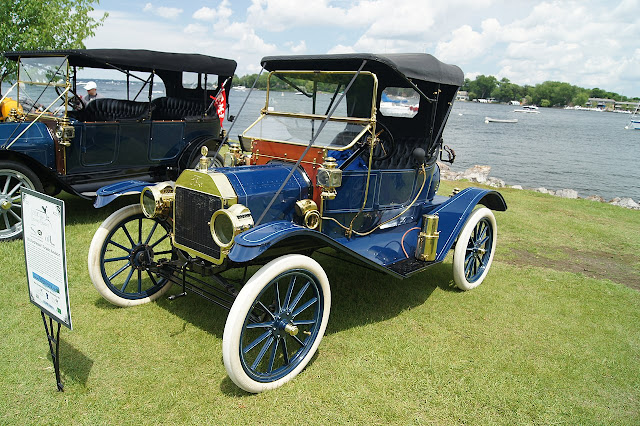“One small step . . .”
Although Neil Armstrong insisted that his words on stepping foot on the
moon in 1969 were "That's one small step for a man, one giant leap for
mankind", in a transcript of the Apollo 11 moon landing sound recordings
he apparently fails to say "a" before "man" and says:
"That's one small step for man, one giant leap for mankind."
This was generally considered by many to simply be an error of omission
on his part. Armstrong long insisted he did say "a man" but that it
was inaudible.
Prior to new evidence supporting his claim, he stated a preference for
the "a" to appear in parentheses when the quote is written. The
debate continues on the matter, as more recent analysis by linguist John Olsson
and author Chris Riley with higher quality recordings indicates that he did not
say "a".
Origin:
The cricketing term 'out for a duck' is used when a batman is out
without scoring any runs.
It refers to the zero on the scoreboard being similar to a duck's egg
and was first used in 1867, in G. H. Selkirk's Guide to Cricket Grounds:
"If he makes one run he has 'broken his duck's egg'."
H H Stephenson.
The Maginot Line:
To defend against any future assault by a resurgent Germany, in the 1930s
France erected a network of forts, obstacles and weapon installations along the
German frontier. Named the Maginot Line after French Minister of War André
Maginot, it was thought that the line would stall Germany which would then be
involved in a 2 front war with France and its then ally Russia.
The ammunitions entrance to Ouvrage Schoenenbourg along the Maginot
Line in Alsace.
Constructed on the French side of its borders with Italy, Switzerland,
Germany, and Luxembourg, the line did not extend to the English Channel due to
the then alliance with Belgium. When the Second World War began in the West on
May 10, 1940, Belgium had become a neutral nation in an effort along with the
Netherlands, to appease Adolf Hitler and the Third Reich. The French believed
that the Ardennes region in the north, weak point in the line, did not need to
be reinforced because the region, with its rough terrain, would be an unlikely
invasion route of German forces; if it were traversed, it would be done at a
slow rate that would allow the French time to bring up reserves and
counterattack.
The German Army exploited this weak point in the French defensive front
with a rapid advance through the forest, encircling much of the Allied forces
and resulting in a sizable force being evacuated at Dunkirk (26 May-June 4,19540).
leaving the forces to the south unable to mount an effective resistance to the
German invasion of France.
The line has since become a metaphor for expensive efforts that offer a
false sense of security.
A hat trick is the fact of achieving a positive feat three times in a
game.
English cricketer HH Stephenson was the first cricketer to be awarded a
hat for taking three wickets in consecutive balls, the origin of the hat-trick.
He performed the feat in 1858. A collection was held for Stephenson (as was
customary for outstanding feats by professionals) and he was presented with a
cap or hat bought with the proceeds.
The term was eventually adopted by many other sports including hockey,
soccer, water polo, and team handball.
World’s largest gun:
In the late 1930s Hitler gave orders for a gun to be developed to destroy
the main forts on the Maginot Line, "a gun able to pierce a metre of
steel, seven metres of concrete, or thirty meters of dense earth."
German armaments manufacturer Krupp complied, creating the Gustav Gun,
named in honour of family patriarch Gustav Krupp von Bohlen und Halbach. The
biggest gun ever built, it was mounted on a railway carriage, stood 4 stories
tall and required a 500-man crew.
Adolf Hitler (second from right) and Albert Speer (right) in front of
the 800mm gustav railway gun in the year 1943
Gustav was not ready for action when the Battle of France began, In any case, as noted above, the Wehrmacht's
Blitzkrieg offensive through Belgium rapidly outflanked and isolated the
Maginot Line's static defences, eventually forcing the French to surrender.
Gustav was later deployed in the Soviet Union during the Battle of
Sevastopol, part of Operation Barbarossa, where, among other things, it
destroyed a munitions depot located roughly 30 m (98 ft) below ground level.
In all, the Gustav fired 300 shells on Sevastopol, and another 30
during the 1944 Warsaw Uprising. It was never used again. It was captured by
U.S. troops and cut up for scrap. A duplicate gun, named for the chief
engineer's wife, Dora, saw action only briefly and was destroyed to prevent its
capture by the Russian army.
Origin:
A googly is a deceptive spinning delivery by a wrist spin bowler which
spins the opposite direction to the stock delivery. For a right-hander bowler
and a right-handed batsman, a googly will turn from the off side to the leg
side. It was developed by Bosanquet around 1900.
The origin of the word is
unknown.
Not every Model T was black:
It is a myth that all of the Model T Fords
were black.
In his 1922 book My Life and Work, Ford
described his policy as “Any customer can have a car painted any color that he
wants, so long as it is black.”
The Ford Motor Company used 30
different types of black paint for different parts of the car’s exterior but
when the Model T first came on the market, customers could get almost any
common colour except for black. Blue, grey, green, and red were all available,
but not black.
The first black Model T didn’t roll off
the assembly line until five years later. Towards the end of the Model T’s
life, six new colors were introduced, from Royal Maroon to Phoenix Brown to
Highland Green. In between there was over a decade of black Model T’s.
1925 Model T
1911 Ford Model T Torpedo Runabout
1920 Touring
1915 Model T Runabout
1911 Model T Ruanbout
1919 Runabout
Although it has been said that Henry
Ford elected to stay with only black paint because it dried faster, it is more
likely that black paint was cheap and durable, and that making only one color
of car was cheaper.
BTW, why a Model T?
Ford started with
the Model A in 1903. There was then the B, C, F, K, N, R & S. The missing
letters were experimental or never got off the drawing board. When Ford ceased
building The Model T they felt the company was entering a new era and started
again with the Model A.













No comments:
Post a Comment
Note: Only a member of this blog may post a comment.